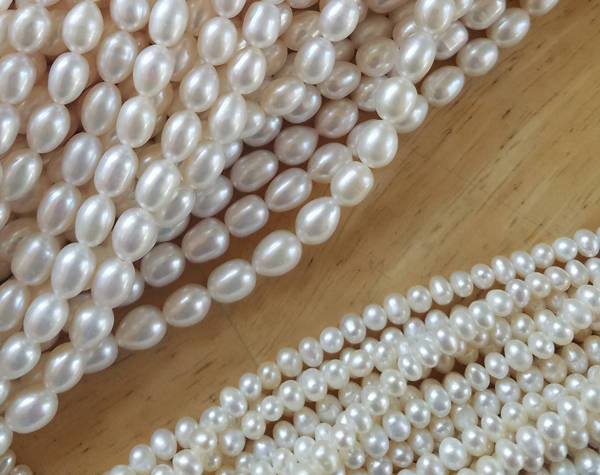
Ten Fascinating Facts About Pearls
Pearls have been a special part of my jewelry design journey; they’re definitely my favorite material. With the varieties of shapes and colors available, they have inspired so much of my design. Each pearl unique, they bring something special to every piece of jewelry. It gives me such pleasure to create jewelry with pearls, knowing it is timeless and can become an heirloom to be joyfully passed on.

If you’re here, I know you love pearls as much as I do – so I’ve gathered ten fascinating things about pearls. I hope you learn something and maybe have a laugh along the way.
- Pearl means pear.
Our word “pearl” comes from the Latin word “pirum” meaning “pear” or “pear -shaped”. Culturing pearls did not begin until the late 19th century and before that most pearls were not round; most were baroque or pear-shaped.
- The original Margarita!
The Romans had their own word for pearls: “Margarita”. According to fable, Cleopatra dissolved pearls in wine and drank them – in a way drinking the original Margarita cocktail.
I think I’ll stick with the tequila version!
- Pearl jewelry is older than 2k.
The Susa necklace, found in the tomb of an ancient Persian Queen, is believed to be the oldest pearl jewelry. It is thought to be about 2,400 years old.
- Pearl is the 30th wedding anniversary gift.
There are traditional gifts for every year of marriage and the 30th year is the pearl anniversary. If you’ve been blessed with thirty years of marriage, I hope you get pearls!
- The smooth surface of a pearl is actually sandy.
The nacre, or coating of the pearl, looks very smooth with its shimmering luster (the thing we love!). The nacre is really made up of millions of tiny crystals, so it is not really smooth. A jeweler’s test of whether a pearl is genuine is to rub it across your teeth. It should feel gritty. The roughness means it’s real!
- Your pearls started in Mississippi.
Cultured pearls are formed when a small ‘seed’ of mollusk shell is inserted into an oyster by pearl farmers. Most of the ‘seeds’ are taken from mussels that come from the Mississippi River. They’ve been selected because they grow large, thick shells and the right shapes can be formed from them. While most pearl farming is done in Asian countries, the center of the pearl comes from the United States.
- Pearly white is not always best.
White pearls are often thought of as highly valued and we culturally use the term “pearly whites” to describe a desirable bright white smile. With pearls, for the most part, whiter does not equal better. Color overtones are something that makes pearls unique and more valuable. Overly white pearls most likely have been bleached, a process that damages the nacre, leaving the pearl with no color overtones.
- The lip determines the color.
The oyster’s outer edge, or lip, determines the color of the pearl. With cultured pearls, the oyster color of the ‘seed’ that was inserted determines the color. Freshwater pearls, produced by mussels, have lips with a variety of colors that produce a multi-hued pearl.
- Pearls predict pollution.
Oysters will only produce pearls if they’re in clean water. Pearl farms are often in remote locations because even small amounts of pollution in the water will prevent pearl production. Unfortunately, even some of these remote areas are becoming polluted and it’s effecting pearl production.
I’ve run into shortages of certain styles of pearls during my sourcing due to pollution. I also use very few dyed pearls anymore because the shortage has meant only poor quality pearls end up dyed.
- Pearl farming is sustainable.
Pearls are the only gemstone produced by a living creature. With much concern about the sustainability of mining gemstones, it’s good to know pearl farming is sustainable. After a pearl is removed, the oyster doesn’t die; it can continue to create more pearls. Farmers carefully remove pearls, knowing an older oyster will produce better and better pearls.
I hope you’ve learned a little something and enjoyed reading about our beloved pearls. I’d love to hear which fact you found the most interesting!
